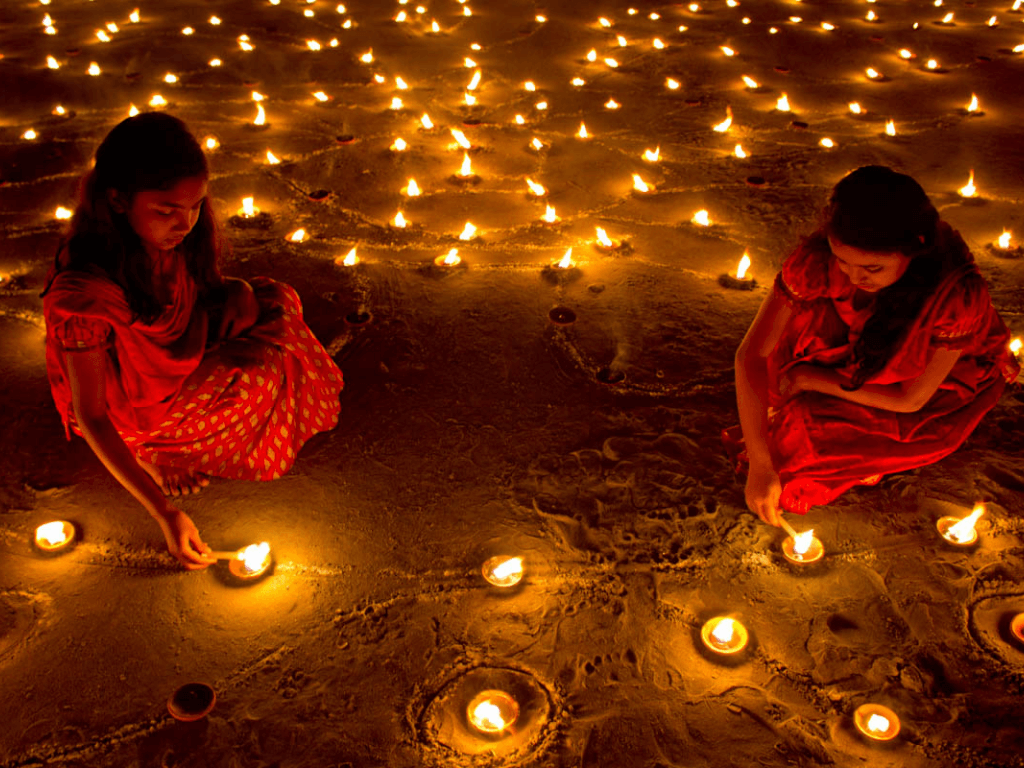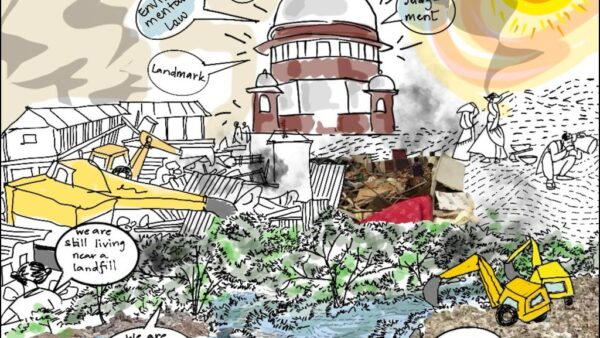As festivals become larger in scale with an emphasis on consumption or consumer spending, the question really is this: can festivals be eco-friendly or green, really? Or are the increasing number of green labels on products and ways of celebrating a mere eyewash, more correctly greenwashing, to tick off the eco-friendly box without a substantial difference to the environment? The answers are not easy to come by. In fact, there is no one answer either.
While governments appear to promote eco-friendly celebrations of festivals, corporates cash in on people’s increasing sensitivity to environmental issues, and some people go out of their way to ensure that celebrations are eco-friendly, this is hardly the norm. The need to be eco-friendly or environmentally sustainable seems to be deepening among people in certain areas or some cities but there’s a long way to go before celebrations of all communities can be truly so.
What does not help the cause are knee-jerk reactions of the kind that some state governments had in the run-up to Diwali. With only weeks to go for the big festival, governments of Delhi, Haryana, Punjab, and Tamil Nadu imposed an immediate ban on the production, storage, sale, and use of firecrackers to counter rising air pollution. Tamil Nadu and Rajasthan, and the hill station of Shimla, clamped restrictions on bursting firecrackers, restricting it to only two hours on Diwali day.
Such restrictions achieve little and can be counter-productive with people accusing governments of being biased against certain festivals, especially Diwali. The enforcement of such restrictions too becomes a problem and annoys people. Besides, when the production, distribution and sale of firecrackers happens for the better part of year, and the chain starts months before Diwali, there’s the question of what producers and distributors will do with their stocks.
Given the worsening air quality in Delhi-NCR, with the level dropping to ‘very poor’ category in late October, a story that has repeated itself over the years, environmentalists and authorities have been pushing for a ‘green Diwali’. This refrain is heard across the country. Controlling air pollution is undoubtedly a priority for the governments of the northern states and other cities, but a restriction or ban on using firecrackers – the end point of the entire production cycle – hardly makes sense. It would be sensible, as activists say, to regulate the production more strictly, ensure that firecrackers are as eco-friendly as possible or least harmful, and possibly cap or ration the quantities put in the market.
Besides, firecrackers are not the only cause or even the proximate reason for poor-quality air given the other factors involved. While they add to the pollution levels, factors like construction dust, vehicular and industrial emissions, and even stubble burning in the northern states, play an important part. For governments to restrict or ban firecrackers but drag feet on the other causes round the year smacks of myopic and selective handling of the issue.
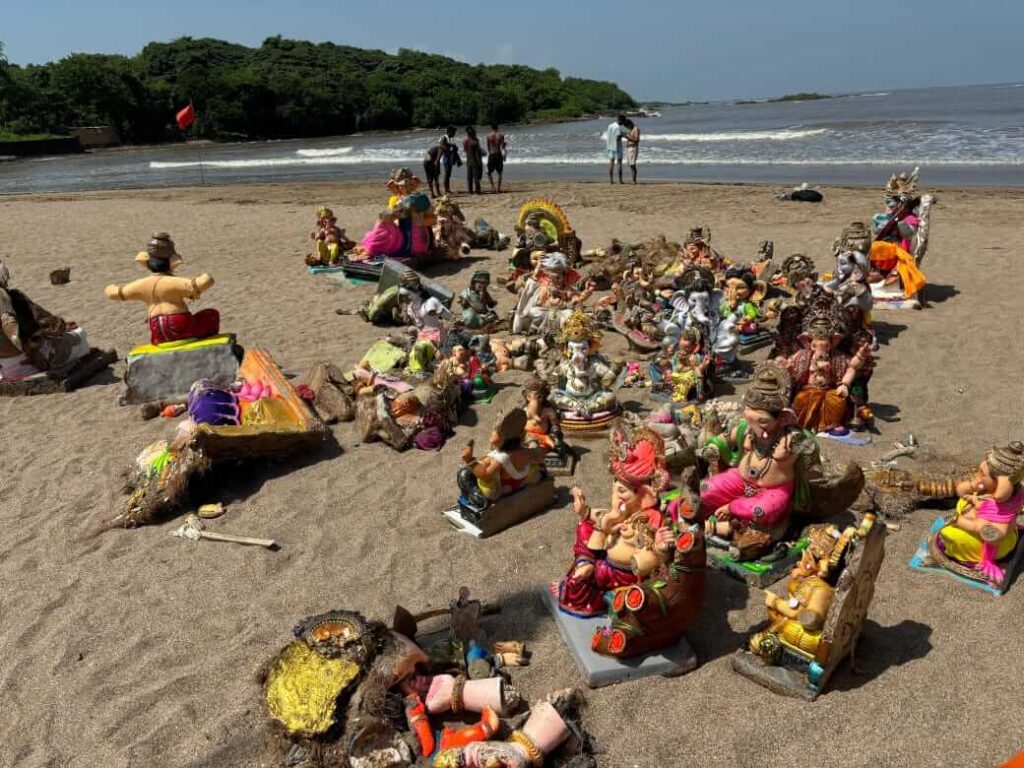
Photo: Rohit Joshi
Can we return to our roots?
Across Maharashtra, and especially in its large cities, it is common to find the remnants and residue of Plaster of Paris used to make idols of the elephant-headed god Ganesha, along with other materials such as thermocol, toxic paints and more after the ten-day Ganeshotsav ends. As the festival grew in its popularity, the original naturally sustainable material used to craft the idols, shadu, or local clay gave way to the eco-unfriendly Plaster of Paris. Given the mass production in these years to meet the burgeoning demand, using shadu may not be realistic or, even, environmentally sustainable.
If we cannot simply return to roots, then what are the ways out? Maharashtra Pollution Control Board launched a campaign called Shahanpan Dega Deva, a popular local aphorism, to urge people to celebrate the festival in a responsible way without harming the environment or any living being, advising people to use biodegradable materials and make environmental-friendly decisions in celebrations. Environmentalists too have been urging people to use shadu and natural colours, and shun thermocol, the disposal or burning of which releases toxic gases into the environment.
However, this eco-friendly push is not always economically viable. Idols made from Plaster of Paris have been in huge demand because of the fine finishing and cheaper prices compared to clay idols; their price range starts from as little as Rs 200 while even the small eco-friendly ones cost Rs 500.[1] The immersion of idols has been made more eco-friendly with artificial tanks and ponds specially created for the purpose of saving the natural waterbodies, we are told.
On May 12, 2020, the Central Pollution Control Board (CPCB) prohibited the use of Plaster of Paris idols and made it mandatory to immerse them in artificial tanks as they harm the natural water bodies. Although the rule was in place, it was not implemented effectively. Environmental activist Rohit Joshi, working with two other activists and nine idol-makers from different parts of Maharashtra, filed a public interest litigation (PIL) in Bombay High Court in July 2024, demanding strict implementation. The CPCB guidelines, drafted in 2010 and revised in 2020, lay down prescriptions for idol-makers, puja organising committees, local authorities, and idol immersion in different water bodies.[2]
However, where does the water from the artificial tanks and ponds get disposed of, finally? Mostly into the sea or other natural water bodies, defeating the purpose. Joshi rues that the CPCB guidelines have been ignored for years. “Their argument in court was that these are only guidelines, not an Act, so it’s not mandatory to follow. This is ridiculous,” Joshi said to Question of Cities. His research showed that at least 12 million idols are sold every year in Maharashtra, of which 80 percent are made from Plaster of Paris and 50 percent of these are immersed in creeks, sea, rivers. The environmental impact is very high, adversely affecting marine life. While a return to roots is not entirely possible during Ganeshotsav, following some guidelines might make the festival eco-friendlier.
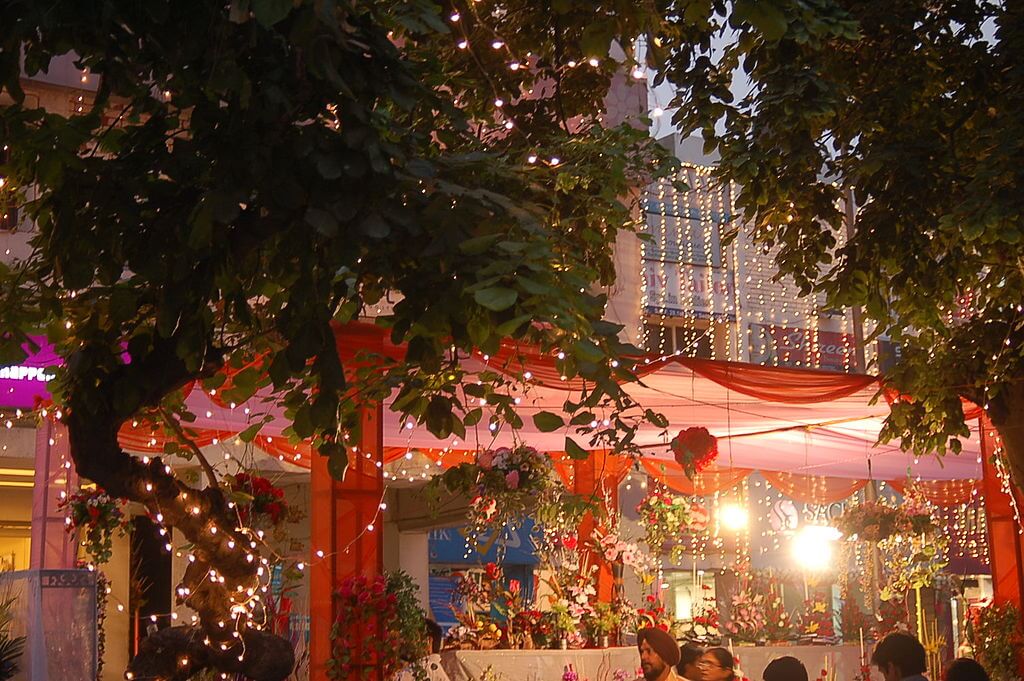
Photo: Wikimedia Commons
Many kinds of pollution
Holi now means chemical-laden synthetic colours and sexual harassment for women; natural pigments from plants and flowers have few takers though everyone agrees vigorously about eco-friendly celebrations and saving water. Things may be changing slowly, though. Millennials are consciously opting for herbal colours; a BBC article reported that Gen Z are weaving modern, innovative and eco-conscious elements into the Holi traditions.[3]
Environmental activist and founder of NGO Awaaz Foundation, Sumaira Abdulali recalls that festivals used to be simple and family-oriented. Without being eco-conscious, people would celebrate festivals in a sustainable and eco-friendly way by using biodegradable materials, recycling products, serving food on banana leaves and so on; Diwali firecrackers were not as toxic. “Beautiful rangolis and lighting earthen lamps was a major part of the festivities but the festival has become louder and brighter. It’s come down to ‘I’m able to spend more money than you’,” says Abdulali, who has been monitoring Mumbai’s noise levels during festivals for 21 years.
Of late, it is not only the noise and air pollution, but light pollution too as cheap LED lights are too bright and too many. “They don’t let you sleep, they’re too bright and harmful for people’s eyes. We need to discuss light pollution too,” says Abdulali. This happens not only during festivals but also during cricket matches and mega weddings.
However, as Delhi-based senior advocate and anti-pollution campaigner Rahul Mehra says, children and youth are saying no to noise and pollution of festivals in different communities. “Many times, it’s the child who comes back from school and tells the parents ‘don’t burst crackers’ but adults buy them anyway and feel proud about bursting crackers, phuljadis, anars and rockets. We need to stop this,” he says.
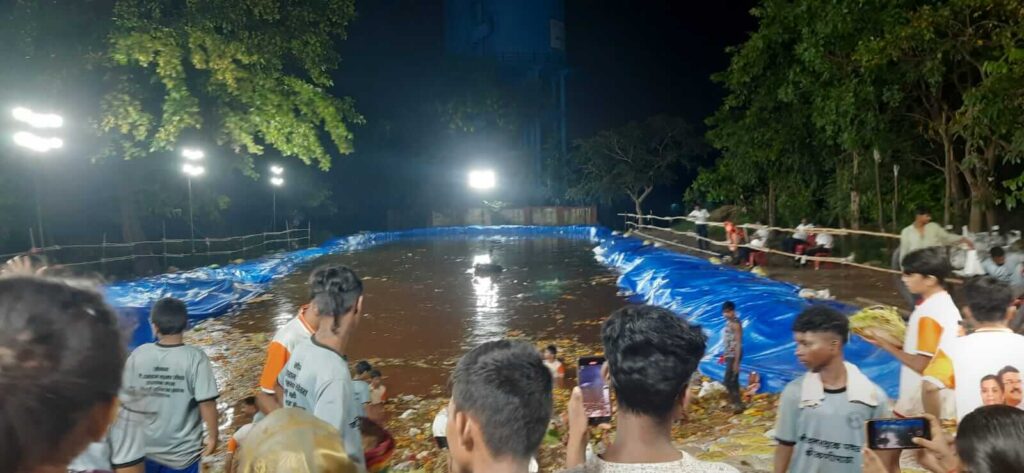
Photo: Nikeita Saraf
Eco-friendly or greenwashing
Are India’s festivals becoming more eco-friendly or is it more of a greenwash? Greenwashing refers to the practice of falsely claiming or exaggerating the environmental benefits of products or services, often using vague or unsubstantiated terms such as “natural” or “green”.[4]
The eco-friendly[5] market has grown globally and India is no exception. A recent study by AC Nielsen reveals that a section of Indian consumers are increasingly aligning towards what’s sold as environment-friendly, natural, and organic products; Goldman Sachs had predicted five years back that the Indian organic personal care market will grow to about Rs 1,000 crore.[6]
Green firecrackers, for example, are supposed to be less polluting and some states like Tamil Nadu have guidelines that allow only green crackers to be burst. P Ganeshan, president of the Tamil Nadu Fireworks and Amorces Manufacturers Association, has stated that green crackers are about 30 percent less polluting than the regular ones[7] but not all come with this guarantee. With hundreds of fake ones around and all claiming to be ‘green’, it is difficult for consumers to distinguish the genuine green ones. Abdulali bought and tested a few; they polluted the air in the same measure, she found. “They aren’t ‘green’ but contain the same chemicals that are banned by the Supreme Court as hazardous. This is just an eye wash,” she says.
Rohit Joshi and his co-petitioners have been monitoring the violations during Ganeshotsav. What they found through Right to Information applications was alarming. “Crores are spent to build artificial ponds for immersion but all the mud collected in these is dumped into creeks,” he says. Among his co-petitioners were nine artisans who stopped making Plaster of Paris idols in favour of clay ones but their business dwindled as the demand for these was not substantial. “Clay is tricky and artisans have to put in a lot of effort. I visited Pen, Raigad, where one unit manufactures 25,000 PoP idols a day but artisans can make only 10 from clay,” says Joshi.
Token gestures such as claims of planting a tree for every rupee spent, dubious sponsorships, selective disclosures such as claiming no-plastic at celebratory events but flying high-profile guests over long distances for the occasion, and other such acts are greenwashing. Genuine sustainability calls for acknowledging the pollution levels of a celebration or event and making the entire chain eco-friendly – materials used, trips made, distances covered, and so on. For example, some temples in Prayagraj are turning floral and puja waste into compost with the help of natural substances[8] but the focus could be on reducing the waste.
Way forward
Some festivals are ecologically sustainable by their very character – Chhath Puja is an example, the harvest festivals such as Onam and Lohri, tribal and rural festivals have a natural ecological connection. Ashok Ghosh, chairman of the state-level Expert Appraisal Committee of the Impact Assessment Authority, says, “Most items used in Chhath are close to nature. The daura and soop, made of bamboo, are biodegradable.”[9]
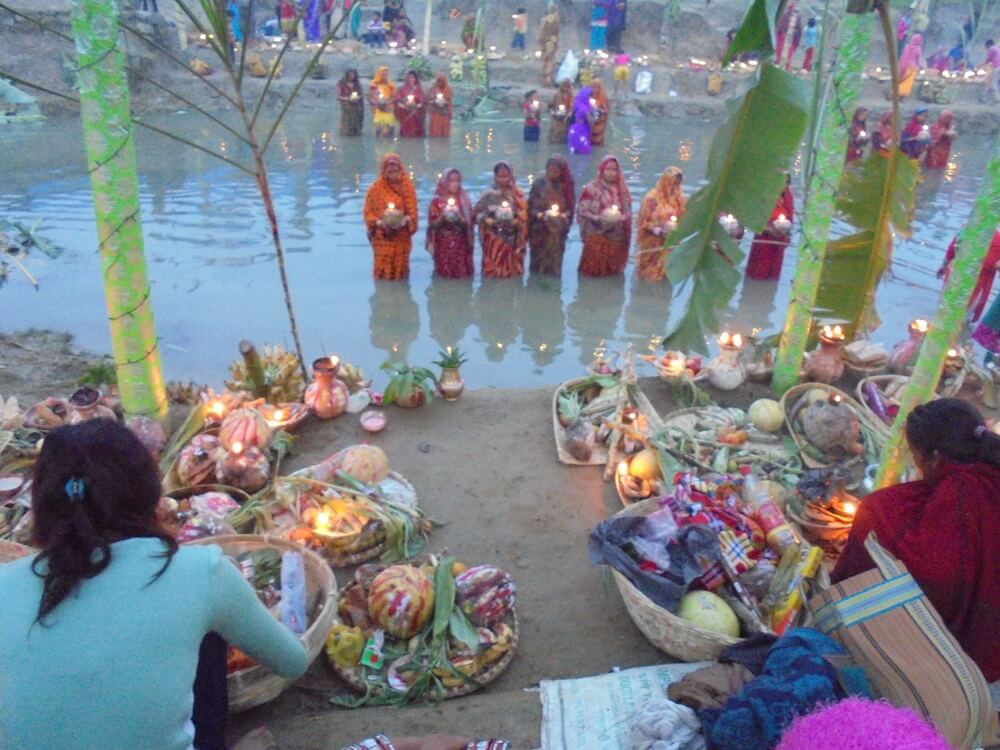
Photo: Wikimedia Commons
Even for other festivals, a sustainable approach does not have to mean reduced flavour or fervour. “Why should it be,” asks Mehra. “If somebody says, let’s just light diyas, that’s celebration too. Why can’t we celebrate by being with each other, enjoying food instead of bursting crackers?” He stresses on citizens’ participation to tackle this “huge man-made crisis”. There are also Graded Response Action Plans (GRAP) which lay down the steps to be taken at each AQI level. Mehra suggests a robust medium-term and long-term plan to deal with Delhi’s air pollution.
Ultimately, even if governments are proactive in making festivals sustainable and green, people’s participation will determine the degree of eco-friendliness because governments can hardly monitor at the micro-level. People need to have credible and genuinely sustainable options, then they can be persuaded to go green. Abdulali asserts that implementation of eco-friendly festival guidelines plays a big role.
Ecology education and awareness about the complex web of life are important for people to take a step in the direction of green-sustainable festivals. “Educating people is not only our job but also the government’s,” says Joshi, “During COVID, we did not immerse idols in water bodies but installed and worshiped the ones in our house, and put them back. Eco-friendly and sustainable options are possible.” Even small efforts such as disposal of waste generated at any festival are welcome but sustainable green festivals are some way away.
Shobha Surin, currently based in Bhubaneswar, is a journalist with 20 years of experience in newsrooms in Mumbai. An Associate Editor at Question of Cities, she is concerned about climate change and is learning about sustainable development.
Cover photo: Wikimedia Commons

